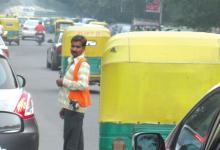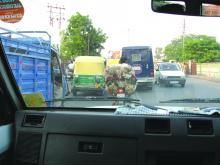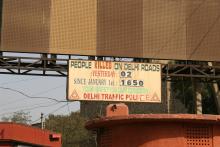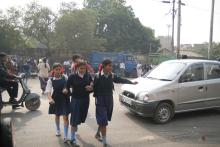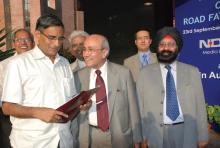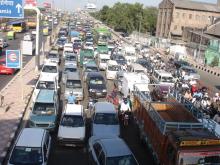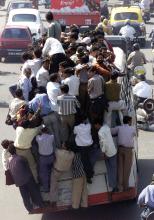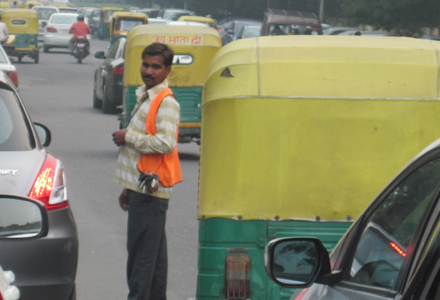
India’s road safety record is the world’s worst but there are plans to tackle the problems. Patrick Smith reports from New Delhi
A speeded up video of a short section of road in the Indian capital Delhi was followed by a question.“How many infringements did you count in that 25-second clip on a typical day in Delhi,” asked Dr Rohit Baluja, a question that brought understandable silence.
It equated to hundreds of millions of infringements each year, said Dr Baluja, president, Institute of Road Traffic Education (
“I am not criticising the government. We are working towards the same end. It is a criticism of the system.”
Speaking at the 7th IRF Regional Conference on road safety in the Indian capital Delhi he said there was a need for uniformity in standards of traffic control devices and an updated road traffic legislation.
Stark statistics, marking India as the nation with the world's worst road safety record, were repeated by many speakers.
They highlighted that 142,000 people a year die as a result of crashes and accidents on India's expanding road network, many pedestrians and two-wheelers.
The causes are many and include bad driving; insufficient road signs or markings and increasingly drink-driving, while many road users are also victims of crashes because of drivers using mobile phones or because they are not wearing crash helmets or seat belts.
And with over 500,000 people each year injured, many badly, the conference discussed ways of tackling the problem.
It is estimated that 440 lives are lost every day on Indian roads and the cost equates to US$65 billion/year or 3% of GDP.
In the last ten years the number of motorised vehicles on India’ roads has doubled and it is projected that by 2020, unless things change, there will be 305,000 fatalities.
Decade of Action
TheHowever, while few speakers disguised the problem facing India, work is being done in a bid to educate road users (this covers possibly the biggest variety of travel modes in the world including rickshaws and animals).
The conference, organised by
Kiran Kapila, chairman of the
The new software application, developed by the Indian Chapter, analysed that over 95% of road traffic accidents involve some degree of driver behaviour combined with one of three other factors: roadway design, poor roadway maintenance and vehicle failure.
RADaR helps traffic police collect accident data in a more systematic and comprehensive manner using a hand-held tablet computer.
The IRF says it offers multiple benefits to key stakeholders, including the traffic police; road authorities; insurance companies, and health authorities.
The conference, inaugurated by Dr Kiran Walia, Minister of Education, Health and Family Welfare, and Woman and Child Development, put forward wide-ranging recommendations for the government and other stakeholders to consider and hopefully to act on.
Mrs Walia suggested that road user behaviour must change towards following the rules. She also emphasised that right from childhood, children should be oriented for safety on roads by including such information on road safety in the school curriculum to develop a road safety culture in future generations.
Indeed, this was included in recommendations, which said that a targeted modern social media campaign should be launched with clear objectives for road safety: younger people are likely to be impacted for better results through such campaigns.
Targeted road safety campaign materials, appropriate to the characteristics of communities, should also be developed and a communication and awareness/ education programme for roadside communities should be introduced for all high-speed road projects, linking these to enforcements.
Road safety agency
Summing up the recommendations Mr Kapila said that a lead road safety agency, established at national and state levels, could set road safety targets and national plans for achieving the goals set in UN Decade of Action for Road Safety, while part of the fuel fund should be earmarked for road safety in a special fund.All fines for traffic violations should be collected in a separate fund and used for road safety.
It was recommended that at least 10% of the cost of all new projects should be provided for road safety features, and no road should be built with safety deficiencies.
Monitoring and evaluation of road safety projects should be done using crashes and fatalities saved along with cost-benefit analysis comparing with a controlled section.
A major recommendation on road safety on urban roads was that it should be mandatory when planning and designing urban roads and streets to provide separate spaces for pedestrians/cyclists so they can move along and across the road in safety. A policy for this should be framed for uniform adoption across Indian cities.
It was also recommended that properly designed bus bays be provided at bus stops for all bus routes in urban areas to improve safety and reduce congestion; appropriate road signs and markings along with traffic calming measures should be provided on all urban roads as an immediate step to control road accidents (blackspots should be addressed as a top priority in every city), and non-motorised transport/NMT (pedestrians and cyclists) should be segregated from all motorised vehicles through footpaths, foot overbridges, skywalks, cycle tracks and skytracks would.
Safety on rural roads
The conference agreed that a lot of work has been done on rural roads but that the number of crashes on these roads is still too high.
Out of a total road network in India of 3.3 million km, rural roads account for 2.65 million km, with the Pradhan Mantri Gram Sadak Yojana (Prime Minister’s Rural Roads Programme) upgrading these roads and connecting villages.
However, the conference recommended that design standards of rural roads be updated to incorporate all safety features including bus stops with bus bays, junctions with proper geometry, pedestrian crossings, and traffic calming measures and these standards should be adopted uniformly for all rural roads developed under all schemes.
Geometric deficiencies, especially at intersections and curves, in the existing rural roads must be removed as a matter of urgency, and visibility issues of night driving, at critical locations be addressed using solar lights. Traffic control devices such signs, markings and speed breaker or rumble strips must be uniformly and mandatorily installed on all rural roads.
It was agreed that all design and operations guidelines of IRC and MoRT&H affecting road safety of rural roads urgently need updating and that a blackspot improvement programme and road safety campaign should be taken up for rural roads, which must undergo road safety audits at all stages of development.
In annual budgets a mandatory minimum 10% of the annual allocations should be made for improvement and maintenance of the road safety features (a similar amount for rural roads), and all design and operations guidelines of the IRC (Indian Roads Congress) and Ministry of Road Transport and Highways (MoRT&H), affecting urban road safety, should be updated urgently.
Delegates agreed that the provision of good public transport in urban areas is an indirect way to promote road safety as the vehicle-kilometre of travel will be reduced; road safety can be promoted through integration of land use planning, strict implementation of the building by-laws and by minimising travel within urban areas, and facilitating use of green modes by design wherever possible, while a dedicated unit for planning of NMT facilities should be established within urban local bodies.
On laws, regulation and enforcement issues it was agreed that a manual of uniform traffic control devices for India be developed urgently, this being mandatory for all roads, while uniform traffic control devices, incorporating modern technologies, should be adopted across the whole country.
Enforcement should be based on technology to make a sustained impact on road user behaviour such as speeding, red light violations, drunken driving and overloading, with zero tolerance.
A uniform Road Traffic Act should be enacted to encompass all categories of traffic including the NMT modes, thus reflecting the appropriate road safety responsibilities of all types of road users.
However, amendments in traffic rules and regulation legislation should be made, so that traffic rules can be enforced realistically.

